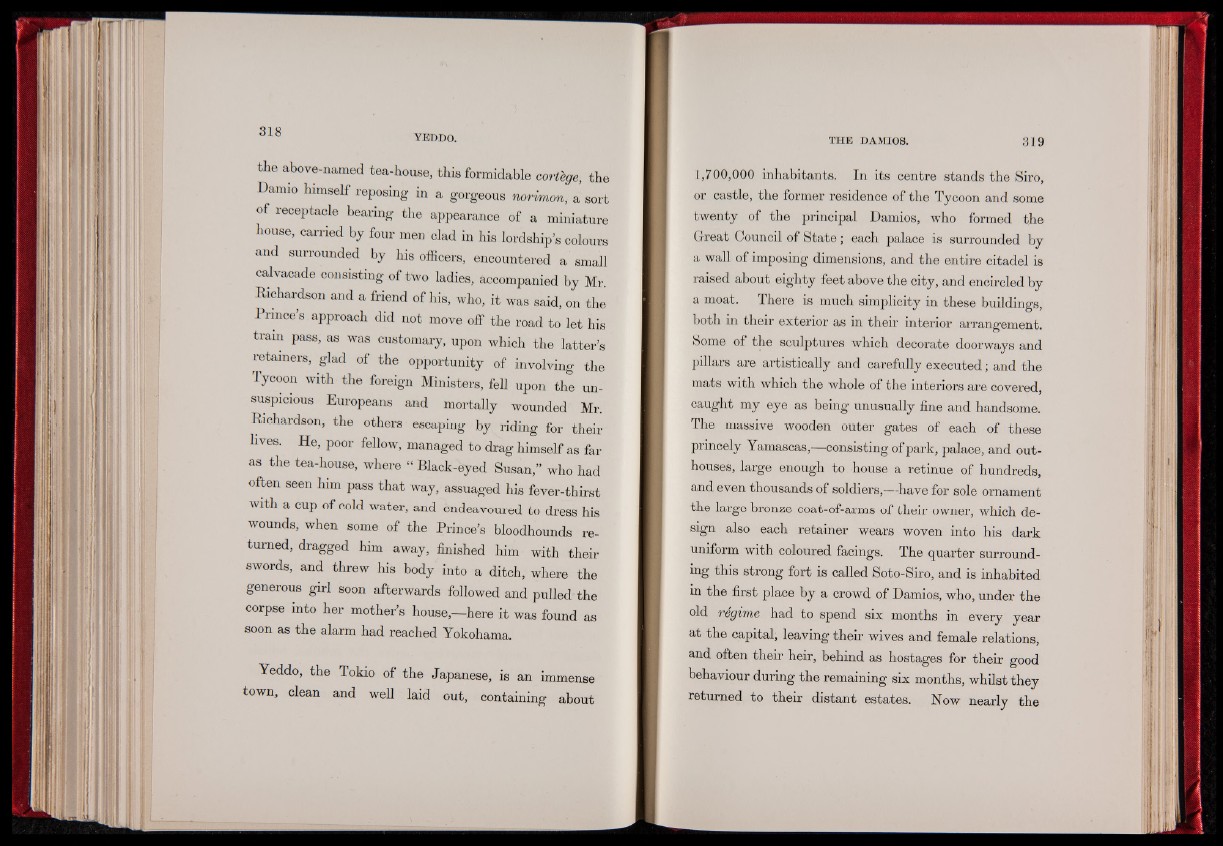
the above-named tea-house, this formidable cortege, the
Damio himself reposing in a gorgeous norimon, a sort
of receptacle bearing the appearance of a miniature
house, carried b j four men clad in his lordship’s colours
and surrounded by his officers, encountered a small
calvacade consisting of two ladies, accompanied by Mr.
Richardson and a friend of his, who, it was said, on the
Prince s approach did not move off the road to let his
tram pass, as was customary, upon which the latter’s
retainers, glad of the opportunity of involving the
Tycoon with the foreign Ministers, fell upon the unsuspicious
Europeans and mortally wounded Mr.
Richardson, the others escaping by riding for their
lives. He, poor fellow, managed to drag himself as far
as the tea-house, where “ Black-eyed Susan,” who had
often seen him pass that way, assuaged his fever-thirst
with a cup of cold water, and endeavoured to dress his
wounds, when some of the Prince’s bloodhounds returned,
dragged him away, finished him with their
swords, and threw his body into a ditch, where the
generous girl soon afterwards followed and pulled the
corpse into her mother’s house,—here it was found as
soon as the alarm had reached Yokohama.
Yeddo, the Tokio of the Japanese, is an immense
town, clean and well laid out, containing about
1,700,000 inhabitants. In its centre stands the Siro,
or castle, the former residence of the Tycoon and some
twenty of the principal Damios, who formed the
Great Council of S ta te ; each palace is surrounded by
a wall of imposing dimensions, and the entire citadel is
raised about eighty feet above the city, and encircled by
a moat. There is much simplicity in these buildings,
both in their exterior as in their interior arrangement.
Some of the sculptures which decorate doorways and
pillars are artistically and carefully executed; and the
mats with which the whole of the interiors are covered,
caught my eye as being unusually fine and handsome.
The massive wooden outer gates of each of these
princely Yamascas,—consisting of park, palace, and outhouses,
large enough to house a retinue of hundreds,
and even thousands of soldiers,—have for sole ornament
the large bronze coat-of-arms of their owner, which design
also each retainer wears woven into his dark
uniform with coloured facings. The quarter surrounding
this strong fort is called Soto-Siro, and is inhabited
in the first place by a crowd of Damios, who, under the
old regime had to spend six months in every year
at the capital, leaving their wives and female relations,
and often their heir, behind as hostages for their good
behaviour during the remaining six months, whilst they
returned to their distant estates. Now nearly the